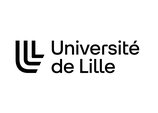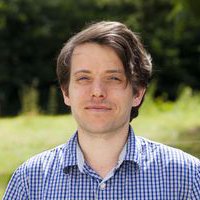Basics of Nuclear Magnetic Resonance
- Duration: 5 weeks
- Effort: 20 hours
- Pace: ~4 hours/week
- Languages: English
What you will learn
At the end of this course, you will be able to:
- to understand the principles of nuclear magnetic resonance (NMR) and the basic liquid-state NMR experiments;
- to interpret one- and two-dimensional (1D and 2D) 1H and 13C NMR spectra of small organic molecules;
- to determine the structure and purity of small organic molecules in solution using NMR spectroscopy.
Description
The NMR phenomenon is currently exploited for many purposes, including medical imaging using the MRI technique as well as the characterization of the structure and the dynamics of matter at molecular scale by NMR spectroscopy, which is a key tool in chemistry, structural biology, pharmacology and material sciences.
"Basics of Nuclear Magnetic Resonance" is the first course of a comprehensive three-part online learning programme on NMR.
It aims at providing students and professionals the basic knowledge about NMR. The MOOC sets out the principles of NMR in solutions as well as one- and two-dimensional 1H and 13C NMR experiments and their application to small organic molecules in solution.
This course is intended for undergraduate and graduate students as well as educators and professionals who need to gain proficiency as routine users of NMR spectroscopy of organic molecules in solution.
Format
During the five weeks of this MOOC you will learn the basic principles of NMR spectroscopy and its use to determine the structure of organic molecules, through video lectures and online exercices such as case studies and quizzes, as well as discussions with other participants and professors through the discussion forum.
This MOOC is taught in English.
Subtitles in simplified Chinese and Japanese are also provided.
Prerequisites
Students should have a background in basic chemistry, including:
- the atoms, the elements and the periodic table;
- the structure of organic molecules (functional groups, electronic effects, stereochemistry);
as well as some basic knowledge in physics
Assessment and certification
The acquired knowledge will be tested through practice and graded quizzes, case studies as well as a final exam.
Your final grade is a weighted average of your grades obtained for the graded quizzes, case studies and the final exam.
You will earn an course completion badge for this MOOC provided your final grade is above 65%.
Course plan
- Week 1: Importance of NMR and the basic principles of NMR spectroscopy.
- Week 2: NMR experiment and 1H NMR of organic molecules in solution.
- Week 3: Probing covalent bonds and connectivities in organic molecules via J-couplings.
- Week 4: 13C NMR of organic molecules in solution.
- Week 5: 2D NMR of organic molecules in solution.
Course team
Olivier Lafon
Categories
Cedric Lion
Categories
Organizations
NMR Learning programme
This MOOC is part of the NMR learning programme which aims at understanding the different aspects of this technique, which is a key tool in chemistry, structural biology, material sciences, food sciences and medicine.
This comprehensive online learning programme is composed of three parts :
Basics of Nuclear Magnetic Resonance
To understand the principles of nuclear magnetic resonance (NMR) and to interpret 1D and 2D 1H and 13C NMR spectra of small organic molecules
Advanced NMR
To learn how liquid-state NMR experiments work and can be applied to analyze biological macromolecules and mixtures of metabolites, but also to acquire MRI images
Solid-state NMR
To discover solid-state NMR experiments and how they can be applied to investigate the atomic-level structure and dynamics of solids
Acknowledgements
Dr. Ming Shen, associate professor at East China Normal University, P. R. China, and Dr. Akiko Sasaki, researcher at Bruker BioSpin, Japan are acknowledged for the translation of the subtitles into simplified Chinese and Japanese, respectively.
License
License for the course content

Attribution-NonCommercial-NoDerivatives
You are free to:
- Share — copy and redistribute the material in any medium or format
Under the following terms:
- Attribution — You must give appropriate credit, provide a link to the license, and indicate if changes were made. You may do so in any reasonable manner, but not in any way that suggests the licensor endorses you or your use.
- NonCommercial — You may not use the material for commercial purposes.
- NoDerivatives — If you remix, transform, or build upon the material, you may not distribute the modified material.
License for the content created by course participants

Attribution-NonCommercial-NoDerivatives
You are free to:
- Share — copy and redistribute the material in any medium or format
Under the following terms:
- Attribution — You must give appropriate credit, provide a link to the license, and indicate if changes were made. You may do so in any reasonable manner, but not in any way that suggests the licensor endorses you or your use.
- NonCommercial — You may not use the material for commercial purposes.
- NoDerivatives — If you remix, transform, or build upon the material, you may not distribute the modified material.



